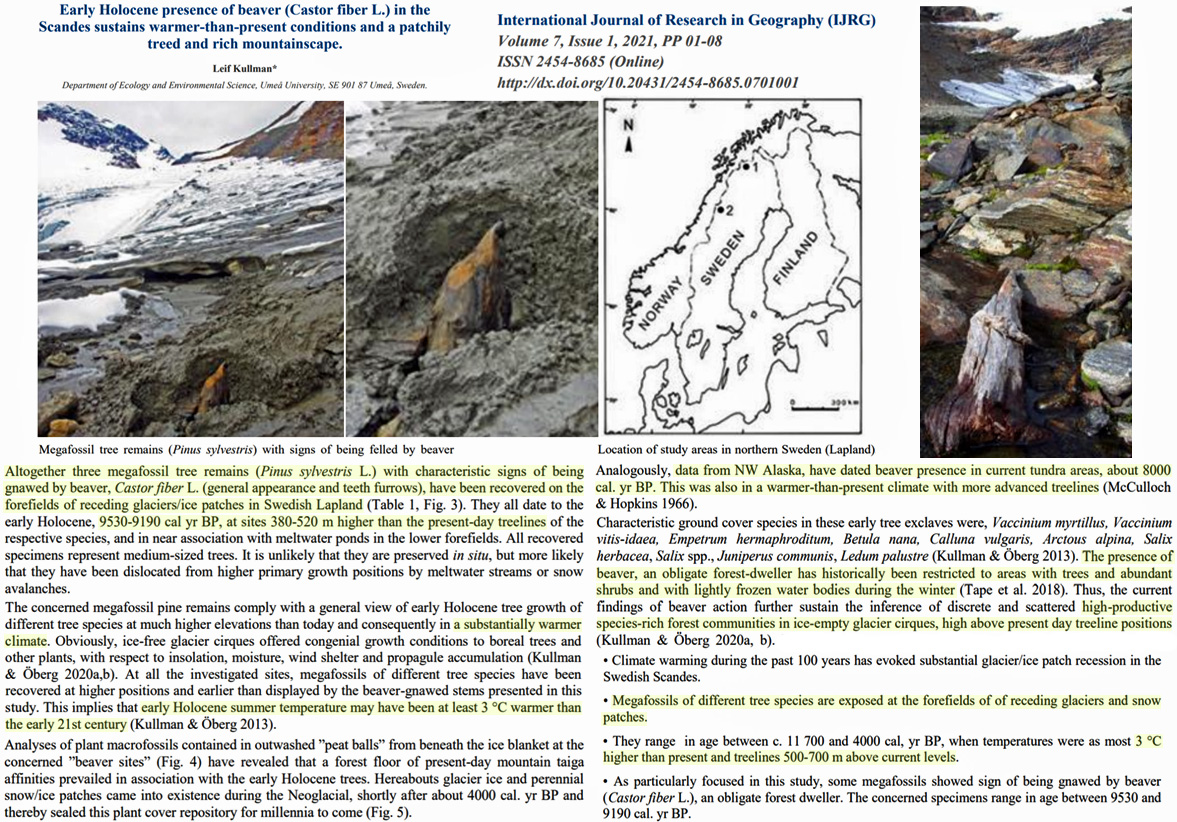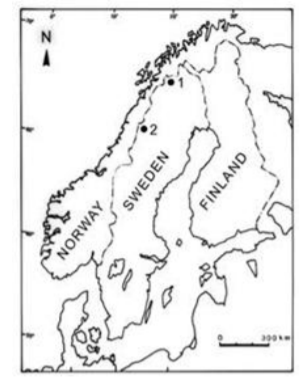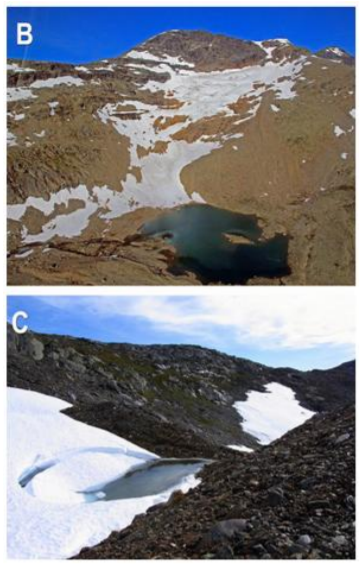By P Gosselin
9300-year old vegetation remnants found under receding glaciers in Northern Sweden show that the trees once grew where tundra exists today, meaning it was warmer.
Hat-tip: Kenneth Richard
A new Swedish publication titled New Presence Of Beaver (Castor fiber L) in the Scandes sustains warmer-than-present conditions and a patchily treed and rich mountainscape finds that trees once grew up to 700 meters above today’s current treeline in Northern Sweden (Lapland, locations 1 and 2).
Figure 1. Location of study areas in northern Sweden (Lapland). 1. Kårsaglaciären. 2. Tärna. Megafossils show much warmer climates 9000 years ago.
Over the past 120 years the climate has warmed, and so there’s been glacier and ice patch shrinkage. This has unveiled earlier vegetation and life.
The concerned vegetational remnants that were found represent tree exclaves in ice-empty glacier cirques, the study says.
Found were megafossils of pinus sylvestris with signs of being gnawed by beaver (Castor fiber L.) from different sites in northern Sweden which today are tundra.
They age 9500-9300 cal. yr BP and are located 400-700 m above present-day tree lines.

There are many earlier studies showing the existence of megafossils from earlier forests once covered by glaciers: (Schlüchter & Jörin 2004; Benedict et al. 2008; Nesje et al. 2011; Reckin 2013; Koch et al. 2014; Kullman & Öberg, 2020a, (Lundqvist 1969; Holmlund et al.1996; Lindgren & Strömgren 2001,
These exposed megafossil remnants represent former tree stands that were later on extirpated and entombed by snow and ice for many millennia. At -0.6°C/100 m lapse rate, it means it was then over 3°C warmer than now in this region at a time when atmospheric CO2 concentrations were well below 300 ppm.
Overviews of the studied glacier habitats, including adjacent meltwater ponds. Megafossil tree remains are found at these levels and even higher upslope. A. Kårsaglaciären. Photo: 2013-09-12. B. Tärnaglaciären. Photo: 2012-08-28. C. Murtserglaciären Photo: 2012-08-28. All sites display meltwater ponds in close association with the lower forefields, recently released from the ice. Images from here.




